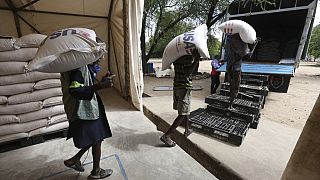Madagascar
Some researchers in local communities in Madagascar have engaged themselves in a mission to save 110 species of lemurs from disappearance.
The primatologist, Jonah Ratsimbazafy explained that 94% of the species on the island are threatened but some such as the Indri Indri are more sensitive than others.
“It is the largest living lemur, this species weighs 7 to 8 kilos. In the past two years, its been part of the 25 primates most threatened in the world. It is mostly sought after a lot, therefore poachers are aware of where you can find them,” he said.
In addition to poaching, the lemurs of Madagascar are confronted with deforestation, unfortunately, the policy of repression from the authorities is not enough deterrent.
The responsibility for the protection of the threatened species has failed due to inadequate conservation programs.
In villages, authorities have put in place an initiative for the production of honey to encourage people to stop the cutting wood.
In a center, located west of Madagascar, students and researchers are working on different types of species.
Franziska is particularly interested in the microcebes, the small nocturnal lemurs.
The diversity of species of lemurs attracts many tourists to Madagascar, but an NGO, Global Forest Watch said the island is facing accelerated deforestation.
A reality that has pushed researchers to establish a network of conservation of lemurs whose purpose is to protect the species classified as among the most vulnerable. Pressure to clear the forest comes from a rapidly growing but extremely poor population seeking to open up a new farmland.
A least 92 percent of people in Madagascar live in less than $2 a day.
A form of slash-and-burn agriculture known as “tavi” in the country sees trees felled and undergrowth scorched to make way for fields of rice and other crops.
However, conservationist have long argued that slash-and-burn farming is needlessly damaging, leaving the soil unproductive after a few years.
Correspondent













02:38
Natural harmony of Uganda's 'Ghost Island' under threat from international tourism
02:05
In Zimbabwe, metal scrap collecting is reducing environmental pollution
02:22
Cameroonian marine conservationists trained as scientific divers
00:50
New documentary shines light on plight of pangolins, one of the world's most trafficked mamals
01:45
How cutting off rhino horns might help curb poaching
01:06
Experts warn of an increase in Glacier-related risks from climate change